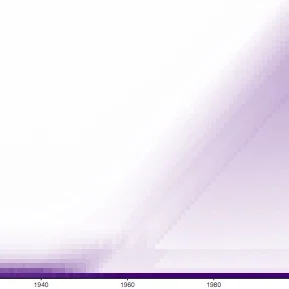Matthieu Domenech de Cellès, Pejman Rohani, Aaron A King
bioRxiv
July 25, 2018
ABSTRACT
Background: The US has experienced a nationwide resurgence of pertussis since the mid-1970s, despite high vaccine coverage. Short-lived immunity induced by Diphtheria-Tetanus-acellular Pertussis (DTaP) vaccines in young children is widely believed to be responsible for this growing burden. However, the duration of protection conferred by DTaP vaccines remains incompletely quantified. Methods and Findings: We employed a rigorously validated, age-structured model of pertussis transmission to explore a range of hypotheses regarding the degree of waning DTaP-derived immunity. For every hypothesis, we calculated the vaccine effectiveness and the relative increase in the odds of acquiring pertussis (or odds ratio) in children aged 5 to 9 years. We then assessed the simulated DTaP vaccine traits that best reproduced the empirical values of odds ratios from recent US epidemiological studies. We found a marked association between the degree of waning immunity, the vaccine effectiveness, and the odds ratio. Unexpectedly, the odds ratio was positively associated with the vaccine effectiveness, as a consequence of non-linear, age-assortative dynamics. Based on the empirical odds ratios, we estimated that vaccine effectiveness exceeded 75% and that more than 65% of children remained immune to pertussis 5 years after the last DTaP dose. Conclusions: Our results show that temporal trends in the odds of acquiring pertussis are a seriously flawed measure of the durability of vaccine-induced protection. They further demonstrate that DTaP vaccines confer imperfect, but long-lived protection. We argue that control strategies should be based upon the best available estimates of vaccine properties and the age-structure of the transmission network.

